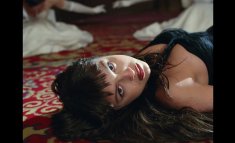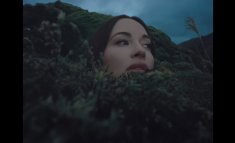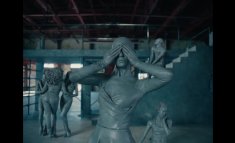Maybe you're a cursory reader of Video Static, who only occasionally drills down into the nitty gritty credits, and you 've been wondering, "What's a colorist?"
Who better to explain that Dave Hussey, a colorist with over 25 years experience and a resume that ranges from Michael Jackson "Black Or White" to Lady Gaga "Bad Romance," and literally thousands more. It's really not a stretch to say that if you've ever seen a music video, you've seen his work.
Dave was kind enought to talk about what he does, in addition to touching upon some of his recent favorites.
Dave Hussey, colorist:
It is true that until recently few people outside of the film industry knew what a "colorist" was or did. That said, within the industry "colorists" or "graders" have always been an important part of post production and especially the look of music videos. Over the past thirty years I have worked with many talented directors and directors of photography who have appreciated the art of telecine and the skill of their colorist. It is true that in the case of smaller budget jobs the 'coloring' is now sometimes done by the editor or director due to budget constraints, but most will agree that when possible the use of an experienced grader can greatly enhance the look of the video.
on Justin Timberlake "Cry Me A River" — A popular video that I graded that still gets referenced many years later is Francis Lawrence's "Cry Me a River" for Justin Timberlake. It won "Best Male Video" and "Best Pop Video" at the 2003 MTV Video Music Awards. It was shot by Jo Willems who is currently shooting the next installment of The Hunger Games for Francis. I like this video because of the subdued mood we were able to achieve and lastly it was anamorphic. I love anamorphic.
As colorists, it is our job to interpret and enhance the look of what the director and DP are trying to achieve visually. A colorist needs to have an innate sense of beauty and mood. There is no substitute for taste. A great colorist is not a button pusher. Our clients come to us for our perspective and collaboration in the look of their film. In the last five years there has been a lot of change in the way music videos have been shot. Budgets have been cut drastically. Every part of the industry has had to become more efficient, faster and cheaper. Most music videos are now shot digitally as opposed to film. Back in the film days we would color correct all of the footage the day after the shoot. The advantage to this was that when the label and artist saw the initial rough cut it already had the "look" the director wanted and artist looked their best except for any fx or skin cleanup.
on Christina Aguilera "Dirrty" — This video is proof that you can combine beauty and grime and have it come out looking amazing.
In present day with digital footage the color correction is not done until the edit is approved and unless the editor has done a rough "grade" on the offline or a rough color correction done on set, the label and artist are looking at relatively flat camera raw images. The drawbacks to this being that the offline is not as impactfull at the offline stage and the artist may be concerned about how they look. The advantage to color correcting after the cut is that you have much less to grade and so more cost effective.
on Rihanna "We Found Love" — Another video that I really enjoyed working on was "We found love" for Rihanna directed by Melina Matsoukas. It was shot by South African DP Paul Laufer. Paul and Melina came to the grade directly from the airport after a long flight from Ireland. Even though they were exhausted and jet lagged they were so excited about the footage they stayed up all night with me and we really pushed the look of the footage and the video won the 2012 MTV Video Music Award for "Video of the Year".
If anything the role of the colorist has become even more important. The technology has become less expensive but the post production process if anything is more complicated. It is quite common now on a shoot to have several kinds of cameras with different visual characteristics shooting at the same time. For example the Alexa or Epic as the main camera, the Phantom for high speed use and a variety of Canon products for portability. It's the colorists challenge to bring these different technologies together to create one coherent look.
I believe the impact of what a colorist can achieve has been felt dramatically in the last ten years in movies especially. If you compare a film that was "timed" photochemically 10 or 15 years ago to how a movie "graded" digitally looks now in present day it's quite remarkable.
Dave Hussey is an award winning colorist working in Los Angeles and a co-founder of post house Company 3...













Comments